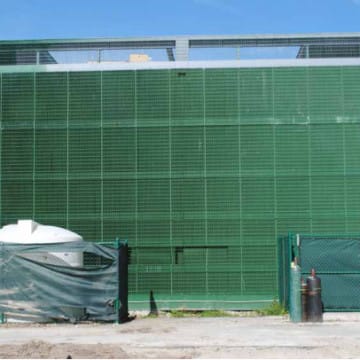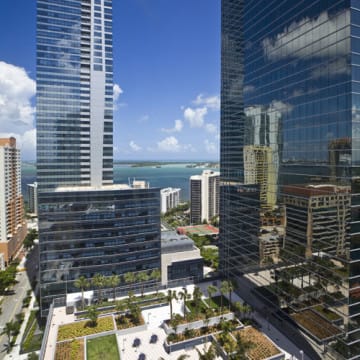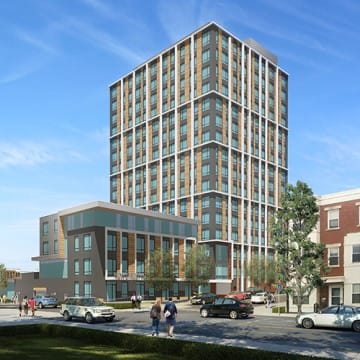Ritz-Carlton, Grand Cayman
In 2012, Five Mile Capital Partners LLC purchased the Ritz-Carlton, Grand Cayman, a luxury resort property with an eight-story, 365-room hotel on 144 acres of Grand Cayman Island, at the foreclosure sale. The property stretches from Seven Mile Beach to the North Sound on the island’s west coast.
Five Mile Capital Partners, a private equity firm based in Stamford, Connecticut, set out to upgrade the facilities, make operations more efficient, and develop new amenities. What made the firm’s plan exceptional was the additional goal of restoring a natural area and reducing the planned development footprint to increase the asset’s value and to protect the Caribbean island’s coastline.
Five Mile knew the resort was vulnerable to hurricanes and tropical storms and all the destruction that could accompany them. During Hurricane Ivan, which struck the island in 2004, the hotel, then under construction by the previous owner, was inundated with 16 feet of standing water and incurred damages related to high winds, water, and humidity. After Hurricane Ivan, the owner filed $180 million in insurance claims, about a third of which was for damages to interior finishes. Storm-related construction delays pushed out the hotel opening by a year and a half, meaning significant lost revenues.
The coastline of the property along the North Sound, although mostly undeveloped and sheltered by a buffer of mangrove trees, also suffered hurricane damage. As part of the hurricane cleanup effort, the previous owner cleared mangrove vegetation along with other storm debris and installed a rock berm that impeded ocean water flow, which caused damage to eight acres of mangroves. Mangroves provide habitat for marine wildlife and birds, so their loss negatively affects the local ecosystem.
By buffering wave action, preventing erosion, and absorbing floodwaters, mangroves can also play an important role in protecting waterfront property during tropical storms; but in this case, the existing mangrove buffer was not wide enough. Five Mile had been one of several secured mortgage lenders for the property, and when the previous owner defaulted, the firm took control of the hotel through a recapitalization. Upon taking title, the firm had a repriced, attractive basis in the property and saw an opportunity for a new approach to create value and make the Ritz-Carlton a top resort in the Caribbean, if not the world. Five Mile wanted to optimize the hotel operations and make strategic capital investments in recreation amenities, such as a marina. Since 2013, Five Mile’s upgrades have included a multimillion-dollar children’s water park, meeting spaces, common areas, retail shops, restaurants, tennis courts, an expanded gym, and completely renovated guestrooms.
Mitigating Risks
Five Mile also has introduced numerous resilience measures: a hurricane preparation plan is in place, informed by lessons learned from Hurricane Ivan. Strategies include barricading parts of the hotel during an intense storm, installing a concrete wall around the generator to prevent stormwater from flooding the diesel tank, and adding removable flood protection walls to cover lower-level doors during storms.
The resort also modified the existing emergency generator and hotel switch gear to provide power during and after a storm, mainly for elevators. To ensure that the hotel could be pressurized and dehumidified during a sustained power loss, the emergency power system was enhanced to accommodate the chillers, cooling towers, outside air-conditioning units, and pumping systems. With the new excess capacity, the generator now runs six hours every day. Capturing and reusing waste heat from generating electricity enables the hotel to meet 80 percent of its heating requirements as well.
A key resilience strategy focused on the mangrove buffer, which emerged as an opportunity for creating value for the property in several ways. The mangroves will be restored to support new recreation opportunities in an environmentally sensitive way and as part of a storm protection system.
A Five Mile team, including OBM International planners and architects, worked with U.S.-based Applied Technology & Management Inc. (ATM) to develop this vision. ATM’s environmental and marina consultants and coastal engineers assessed the mangrove conditions, documented baseline environmental data, and proposed an environmental restoration plan that supported the mangrove as an amenity. Five Mile also worked with Jean-Michel Cousteau’s Ambassadors of the Environment to identify ways to enhance environmental and educational programs on site, such as boardwalk access, viewing platforms, and kayak trails.
The mangrove analysis supported a new plan for developing for-sale luxury units on the property. The previous owner had applied for development authorization to remove what was left of the mangroves and to build 350 condominiums on the site. Five Mile’s approach focuses on quality over quantity by reducing to 90 the number of new for-sale units and by restoring the eight acres of mangroves as a natural amenity that will benefit the island and its inhabitants as well as the resort guests and owners.
The Cayman Islands Department of Environment has encouraged the new approach as a coastal development best-practice model for mangrove protection and restoration. The Grand Cayman government is pleased that Five Mile wants to enhance critical natural infrastructure that supports the island’s environment and local economy. In turn, Five Mile welcomes its relationship as a partner with the government. Authorization for the comprehensive development proposal is anticipated by the close of 2015.
Creating Value
Since 2012, Five Mile has completed $25 million in improvements and resilience measures and has committed to spending an additional $25 million. Approximately 10 percent of the investment has been directed to resilience strategies, including hotel barricades, a concrete wall around the generator, the expanded on-site generator, and removable flood protection walls. The Ritz now generates more than $100 million in revenues, which represents a significant portion of the local economy (the resort employs 800 people, one-third of whom are local residents). Five Mile believes that recent resilience efforts have helped enhance the value of the property, now estimated at more than $500 million.
“We’re at the cutting edge of what property owners should be thinking about in terms of reducing carbon footprint, being environmentally sensitive, and accommodating the community.”—Jim Glasgow
Energy savings are helping the bottom line. In a region where utilities cost between four and seven times what they cost on the U.S. mainland, the upgrade of the on-site generator—coupled with cogeneration of heat and energy, produced at 32 cents per kilowatt hour—saves $300,000 annually in electric costs. The ability of the on-site generator to operate the hotel air conditioning for 30 days to pressurize the building is critical for protecting interior finishes against high humidity conditions, especially after a storm, which helps the resort avoid costly future damages.
Long-term asset value was a motivating factor for resilience efforts. Risk assessment and insurance professionals have said the enhanced storm protection system, including restored mangroves, could lower insurance premiums. Five Mile believes that this natural feature and associated amenities will enhance the price and velocity of sales when residential units come to market.
“We take the long view,” says Jim Glasgow, managing partner of Five Mile Capital. Although the return on investment for the mangrove restoration and improved storm protection may be hard to calculate, the project offers much ancillary value, including tasteful natural landscapes, recreational amenities authentic to the destination, and a unique platform for ecotourism education programs. “There is no doubt in our minds that it will make our property that much more attractive from a marketing perspective, for both hotel guests and property owners.”
Yet another reason for resilience efforts: Being stewards of the land “is the right thing to do,” says Glasgow. ”We’re at the cutting edge of what property owners should be thinking about in terms of reducing carbon footprint, being environmentally sensitive, and accommodating the community. We feel these efforts and profitability are not mutually exclusive—they will be selling-point amenities to customers.”


